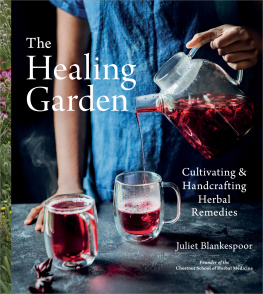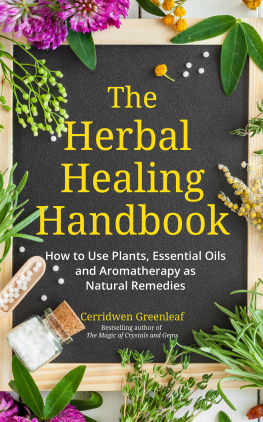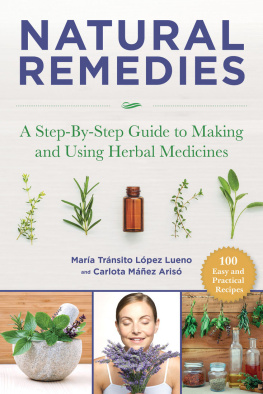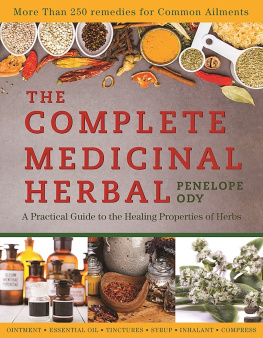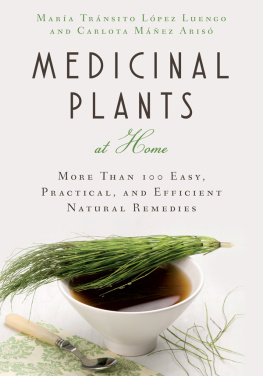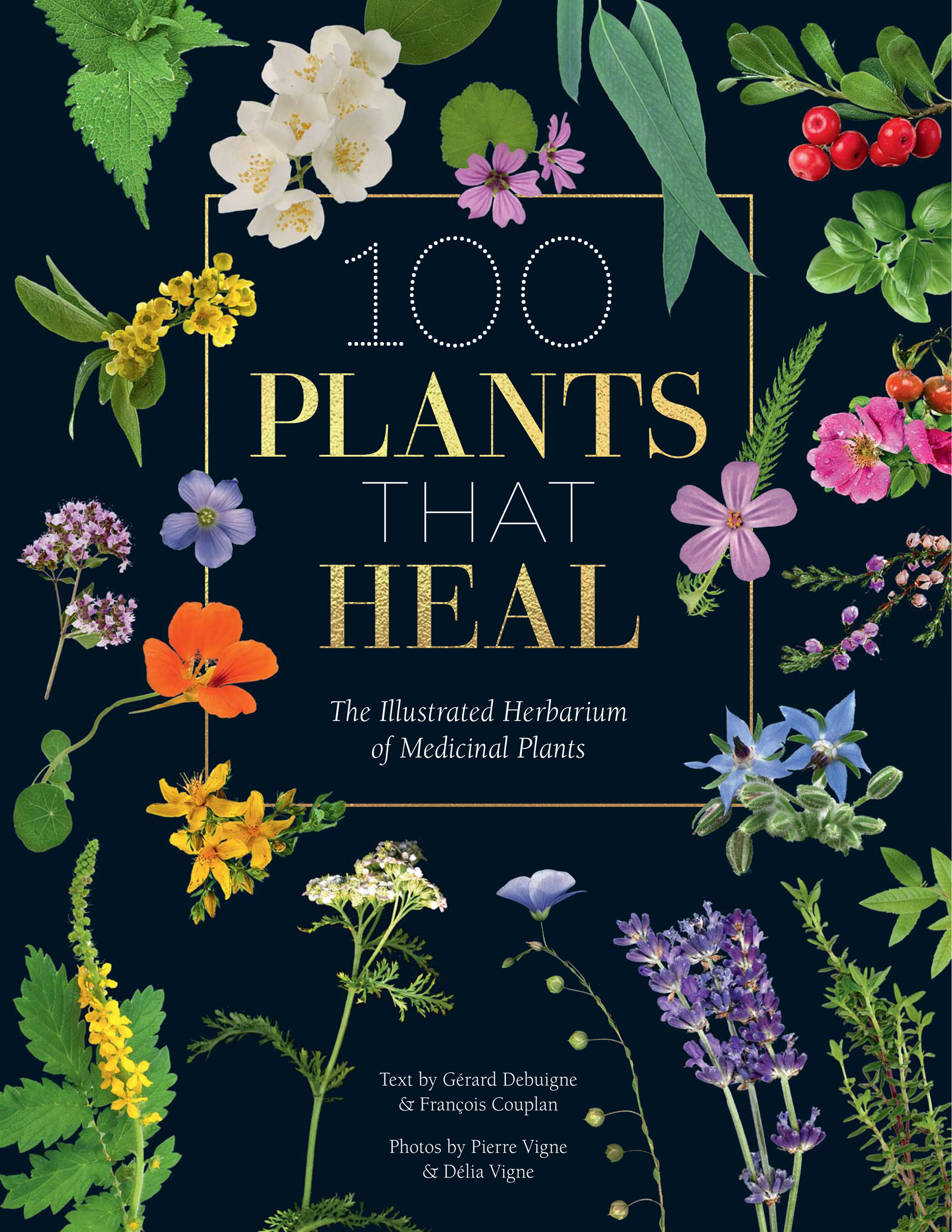Contents
Guide
Pagebreaks of the print version
PLANTS
THAT
HEAL
The Illustrated Herbarium of Medicinal Plants
Text by Grard Debuigne
& Franois Couplan
Photos by Pierre Vigne
& Dlia Vigne
THE 100 PLANTS THAT HEAL
PRECAUTIONS FOR USE AND WARNINGS
The publisher and authors bear no liability for any inappropriate use of the remedies suggested in this book. The plants described in this book should not be consumed in excessive quantities or for longer than recommended. This book should not be a substitute for medical treatment. Under no circumstances should you stop treatment without medical advice. Always seek your doctors opinion before following the recommendations set out in this book. If you are suffering any chronic illness, ask your doctor or pharmacist for advice before using medicinal plants.
INTRODUCTION
T his book of 100 Plants that Heal seeks to cast a spotlight on a selection of common healing plants. Most of the examples given are indigenous to Europe, although some are naturalized (such as Garden Nasturtium), and harmless if used properly. It is not an exhaustive collection.
The aim of this book is to teach you to recognize these healing plants, magnified by the remarkable botanical photographs by Pierre and Dlia Vignes, learn a little of their history, and try out the traditional recipes that use them. No deadly plants have been included, even those with widely recognized healing powers (such as Foxglove, Henbane, Hellebore, Naked Ladies and Deadly Nightshade).
Humankind has always had a close relationship with the plant world. Plants have been part of our food since time immemorial as it is not physiologically possible for us to live entirely on animal products. However, in addition to this fundamentally nutritional approach, humans learnt early on that specific plants, in a wide variety of forms, could be used to treat ailments. Excavations in Iraq have uncovered a 60,000-year-old tomb containing the remains of eight medicinal plants. There is little doubt that the medicinal use of plants is as old as the human race itself. Observations of chimpanzees in West Africa indicate that it may even be older. These studies revealed the apes were using many plants with as-yet-unexplored medicinal properties.
There have been many changes in the relationship between plants and humans since the days when our great-great-grandmothers used healing plants from jars on the kitchen shelves to make infusions with boiling water and to treat family ailments. Our knowledge of plants has grown considerably and a genuine upheaval could be said to have taken place in the field of medicinal plants. Analysis has become much more widespread and active elements have been isolated. This has led to a better understanding of how many (but far from all) plants react with the body.
Numerous clinical studies have enabled reliable results to be obtained on the effects of several dozen plants. Some hazards have also come to light. While the most poisonous plants tend to be widely known, recent research has indicated that others may demonstrate a more subtle toxicity and that their regular use over a prolonged period can cause major problems, sometimes even resulting in death.
Work has also begun on exploring exotic plants boasting medicinal properties, some of which have quickly come into common use. In some cases, such as Ginkgo, Devils Claw and Echinacea, they have effectively dethroned their European equivalents. In addition to the classic infusions, other means of using plants for medicinal purposes have been developed, such as gels or integrated fresh plant suspensions. Other therapeutic techniques, such as aromatherapy, have also become widespread. In the light of the profusion of new data, combined with a significant expansion in the medicinal plants market and an increased interest in self-treatment, the law has had to adapt, becoming more relaxed in some areas while tightening up in others.
We have moved far from the medicinal plants and beneficial infusions of yesteryear. For pharmacologists, plants are simply a medium of support for the active elements they contain. If it is possible to synthesize these elements, so much the better, as plant matter itself is often regarded with suspicion. On the other hand, users often prefer to take responsibility for their own healthcare, and look for advice in books or on the internet rather than visiting a doctor. However, the occasional accidents that result from this approach provoke an immediate reaction from the medical profession and the authorities who are always keen to retain control over the therapeutic use of plants. The commercial successes of some plants, such as St. Johns-wort and Stevia, have even provoked vigorous reactions from the chemical- and sugar-industry lobbies, who are concerned about losing market share.
Despite the enormous advances in modern medicine, the use of healing plants still offers multiple advantages. Indeed, it is easy to forget that it is only within the last 150 years that humans have had anything other than plants to cure their ailments.
Nowadays, plant-based treatments are once again taking centre stage, as the efficacy of medications, such as antibiotics (considered the almost universal solution to serious infections), is on the decline. Bacteria and viruses are continually adapting and learning to resist the drugs that target them. Herbal medicine, which offers natural remedies that are well accepted by the human body, is often associated with classic treatments. It is currently undergoing an exceptional renaissance, especially for the treatment of chronic illnesses, such as asthma or arthritis.
Botany has also seen a significant evolution. The old medieval plant names have drifted out of use. Who still remembers that Celandine, Valerian and Convulvulus were once known as Pilewort, All-heal and Granny Pop Out of Bed? Family names have been rationalized: Compositae replaced with Asteraceae, Cruciferae with Brassicaceae, Umbelliferae with Apiaceae. The scientific names of many plants have been changed by application of the principle of anteriority, which stipulates that the name used at the time of the first valid description of a species must be used; while, following the study of plant genomes, some plants have been moved from one family to another.
A medicinal plant is a plant that has a therapeutic effect on the body without being toxic at a normal dosage: primum non nocere (first, do no harm). It is important above all else that reasonable use aimed at healing a given illness does not cause any ill effects. Naturally, it is also desirable that it should fulfil the aim of effectively treating a health problem or injury. The general term medicinal plant covers a wide range of flora, from those that are entirely edible (in the form of food or condiments) to those that are genuinely deadly, and should be treated with the utmost caution. At the former end of the spectrum is the wide variety of wild, edible fruits and vegetables, some of which are included in this book (such as Blackcurrant and Leek). Even if at first glance their medicinal properties are not particularly powerful, they generally have remarkable nutritional qualities. Regular consumption of these sorts of plants is beneficial to the body and represents a genuine form of preventive medicine. While plants are easy to use, some of them may also produce side effects. Like all medicines, medicinal plants should be used with caution. Even Comfrey, a plant that was widely used in the past, can have fatal effects in certain circumstances; it has been restricted or prohibited for oral use in Europe and several countries including the United States. However, when a herbal remedy is used correctly, the risk of side effects is very limited.


